Summary
With two months to spare before roadmapping, leadership at a diet company asked for “big bets” that would provide value to users and improve retention. This research informed what problems to solve and how.
I led ethnographic research with WW dieters in the US and the UK to identify the key pain points members face when deciding what to eat at home, at the grocery store, and when dining out. I crafted a journey map, and socialized it with partners and leadership via a workshop. Using existing data, we prioritized problems. The PD, PM, and I ideated on solutions. The outcome? A feature that remains one of the “most loved” tools in the app, years later.
Background
Problem
Deciding what to eat when dieting is hard. The WW app provides meal ideas and a searchable database of foods, but members who are enjoying a night out with friends or in a rush after soccer pickups and before bedtime don’t necessarily have time to research all their options.
Goal
We want to understand how WW dieters decide what to eat, and what the biggest challenges are, in order to reduce barriers to sticking with the diet and increase WW retention.
Team
1 UXR
2 PD
2 PM
1 market reseacher
40 engineers
Timeline
8 weeks
Planning: 2 weeks
Ethnographic research and analysis: 5 weeks
Sharing: 1 week
Tools
- Dovetail
- Qualtrics
- Mural
Approach
Ethnography
Journey Map + Workshop
Step 1: Ethnographic Research
Why Ethnography?
Past interviews gave vague answers to similar questions. I knew we needed to observe behaviors and ask questions in context.
Method-specific shortcomings and biases were considered, along with time, cost, and ease of stakeholder participation.
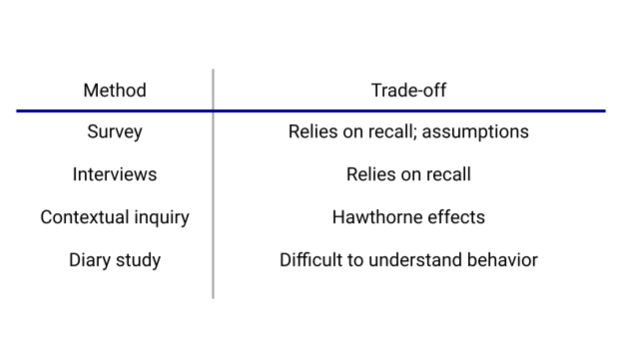
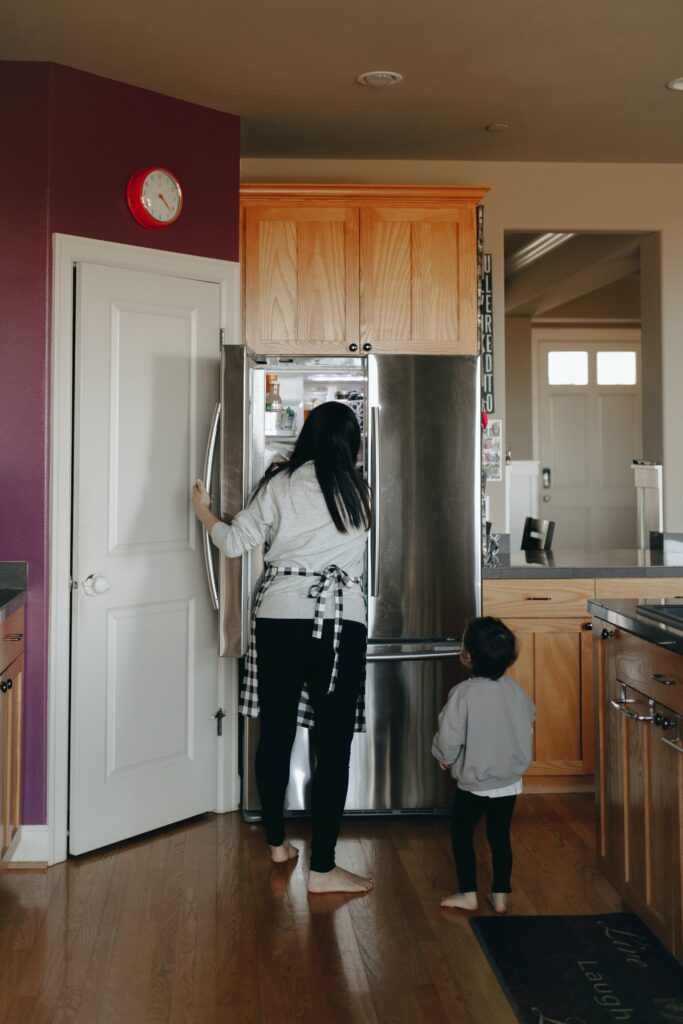
Methods
- Observations and interviews in users’ homes, at the grocery store, and in restaurants.
- Sample: 22 members total; 11 in the US and 11 in the UK
- Recruitment: recruited users based on proximity to areas where membership is high OR where the company was prioritizing expansion
Team Participation
- Team members’ involvement was pivotal – they took notes, collected artifacts, helped with logistics, and shared their key takeaways during daily debriefs.
- Two PMs and two PDs took turns helping; two observers total for each session.
- Each day we debriefed as a team, using sticky notes to capture what stood out.
- We used affinity mapping to group themes at the end of the week.

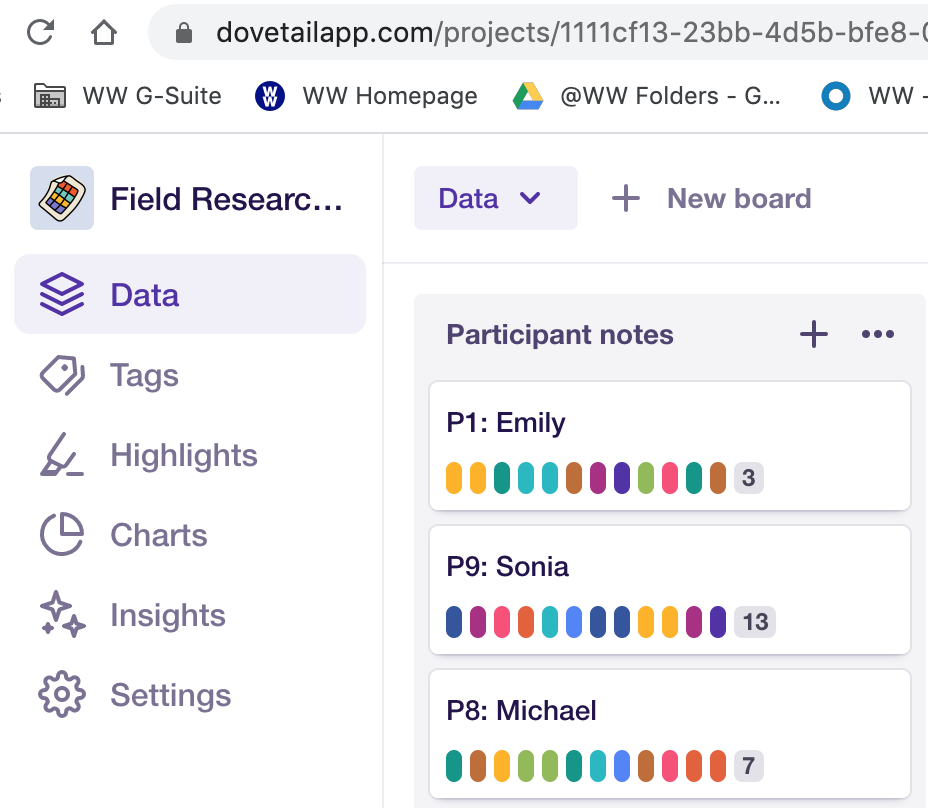
Synthesis
I transferred notes to dovetail for quick synthesis, tagging, and thematic analysis.
Example Findings
User Stories
“If I knew how to save points I’d make those changes… like chicken breast is zero points but chicken thighs are five.… but it feels impossible to predict.”
-New member, UK
.

I go over points. I’m not sure what I can do differently to use fewer points
“When I’m trying to put together a meal quickly, I’m not going to the store and buying all these ingredients. I use what I have here. But it’s hard to think of new ideas and I get tired of eating the same thing over and over”
-New member, US

I decide what to eat based on what I have on hand, and need help coming up with new ideas.
“I look at the menu and see what I think will be low-ish points. Then I’ll look for something similar in the search… normal [generic] and others from chain restaurants. Then I’ll try to guess: Is this place healthier or less healthy…… It’s really frustrating because it’s probably about 50% accurate.”
-Tenured member, US
I loo.

Estimating points for restaurant meals takes too much effort and feels inaccurate, so I don’t track.
Step 2: Journey Map & Workshop
I summarized findings into a journey map and discussed the journey map with partners and other researchers for feedback before the workshop.
.
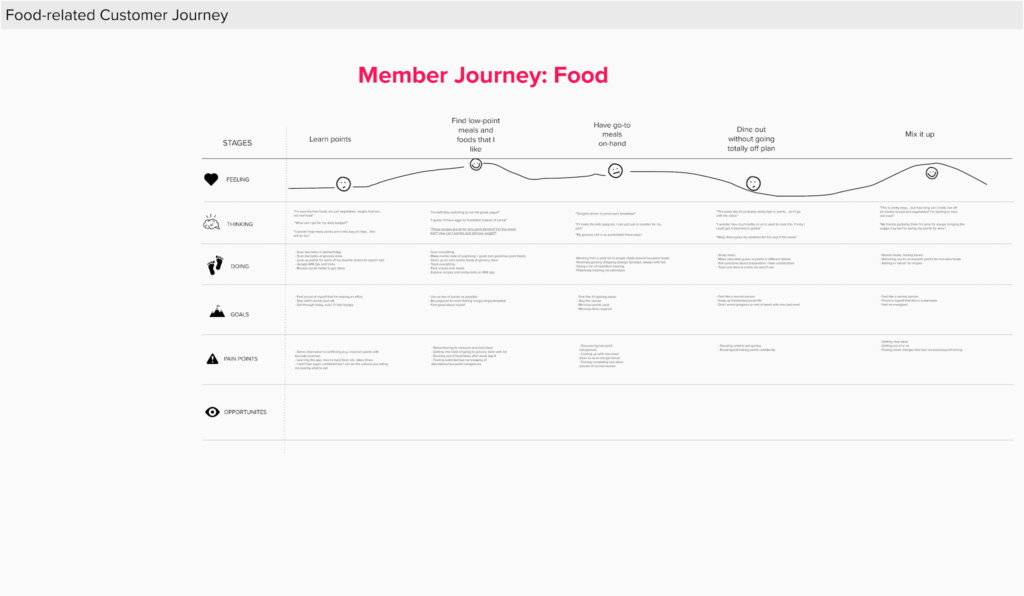
Roadshow with deck
I put all findings into a slide deck and presented this to various groups during a research roadshow. I took parts of this deck and used them in the workshop, described below.
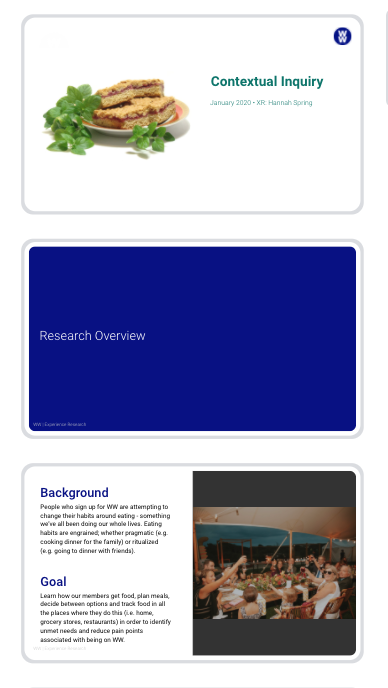
Workshop with deck + journey map
I presented a shortened version of the deck and used the journey map + example quotes (shown below) to facilitate brainstorming.
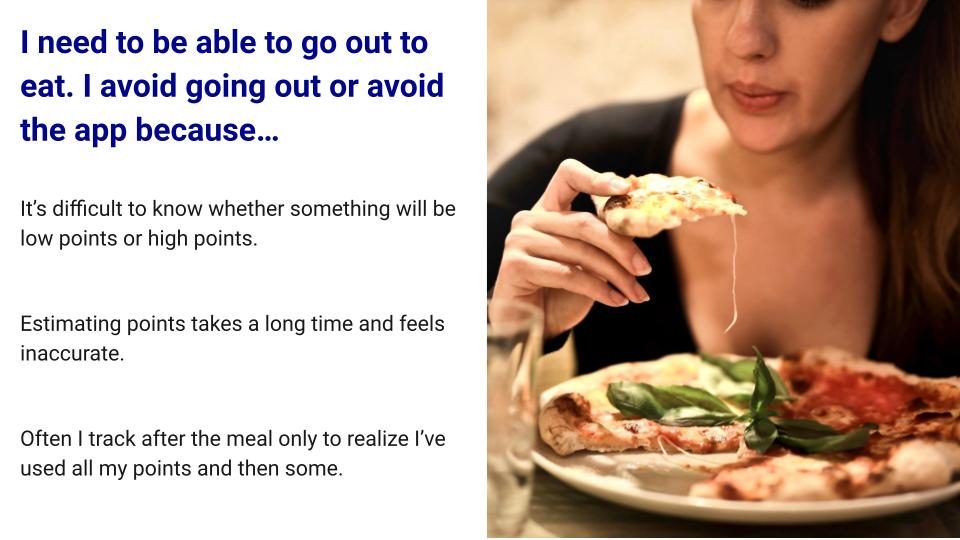
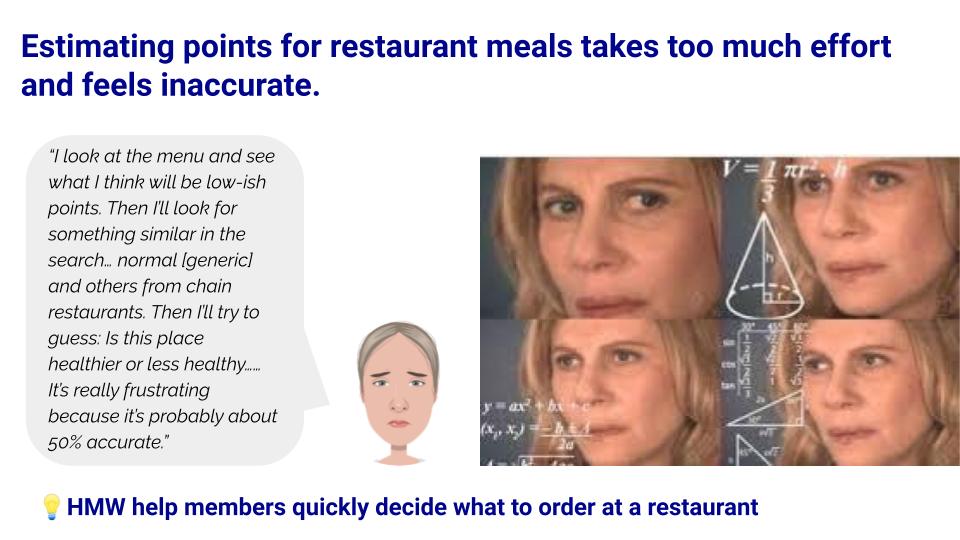
Impact
A well-loved feature was built to address one of the identified problems.
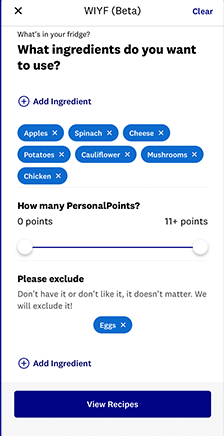
After the workshop, new concepts were fleshed out and sent for further testing. One of the concepts was built and is a frequently used, delightful feature in the app today
